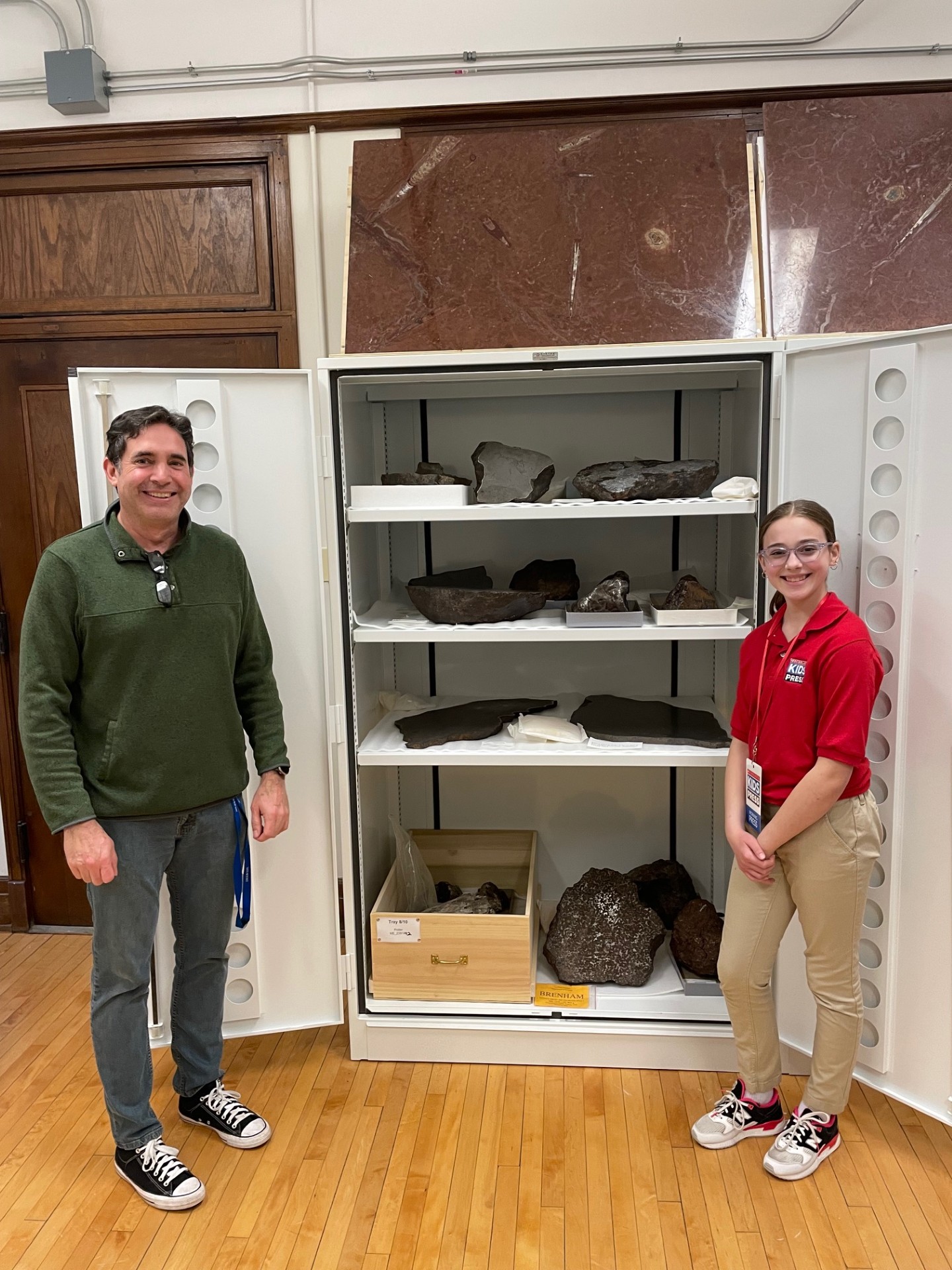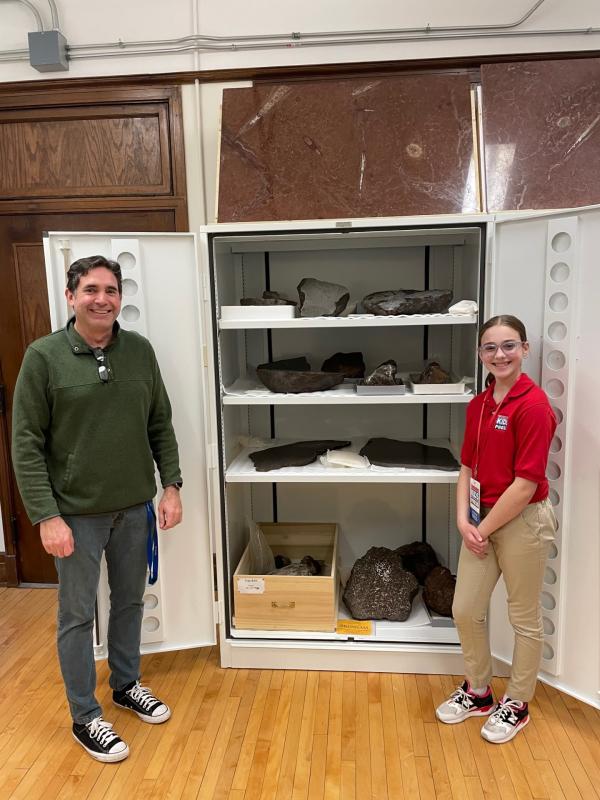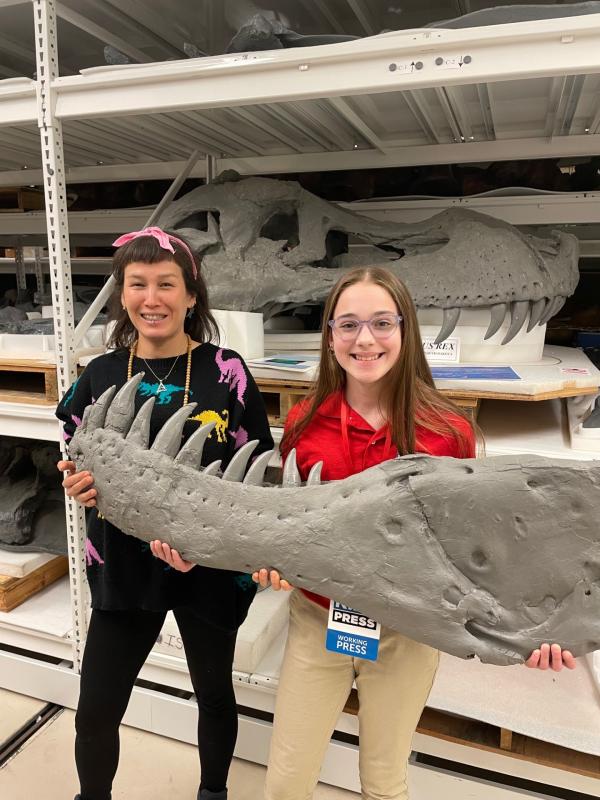KID REPORTERS’ NOTEBOOK
Behind the Scenes at the Field Museum


A scientist at the Field Museum shows Evy a storage bin of metorites.
I recently visited the Field Museum in Chicago, Illinois. Visitors to the famous museum can learn about woolly mammoths, precious gems, mummies, and more. Behind the scenes, there is also a lot of activity, including research and the restoration of artifacts.
Kate Golembiewski, public relations and science communications manager at the museum, introduced me to the maze of laboratories, offices, and storage areas, where 40 million artifacts not visible to the public are kept. We saw everything from stuffed birds to insects.
Jingmai O’Connor, an associate curator of fossil reptiles, gave me a tour of the Dinosaur and Oversized Paleontology Collection Room. Built 15 years ago, the room is lined with shelves. Moveable cabinets housing fossils fill the middle. O'Connor showed me the fossils of different types of dinosaurs, including the theropod, sauropod, and allosaurus. The Field Museum, O'Connor told me, has one of the largest collections of Antarctic Dinosaur fossils in the world.
Some fossils at the museum are original. Others are casts that were made from real fossils on exhibit. Having a detailed replica of fossils allows researchers to study them without damaging the originals or having to pull them from a public display.
“It can take a week, or more than a year, to clean off the dirt and debris so the fossils can be studied,” O’Connor said. “One fossil that is really, really cool by itself is pretty useless. You need the entire collection so that you can put the data from a specimen in context and get the bigger picture.”
The bigger picture is pretty big. Dinosaurs roamed the Earth for millions of years. In fact, O’Connor said, “We humans are closer in time to T-Rex [Tyrannosaurus Rex] than T-Rex was to Stegosaurus.”

Paleontologist Jingmai O’Connor, an associate curator of fossil reptiles at the Field Museum, shows Evy a Tyrannosaurus Rex jaw fossil.
MASS EXTINCTION BY METEORITE
When asked why dinosaurs went extinct, O’Connor clarified that only non-avian (not relating to birds) dinosaurs are extinct. She talked about the impact of a meteorite that hit the Yucatan Peninsula about 66 million years ago. The meteorite hit at just the right place and time to trigger a mass extinction.
“If that meteorite had hit three hours earlier or three hours later, it wouldn’t have caused a mass extinction,” O'Connor explained. “It hit a shallow ocean, and the rocks in the shallow ocean had a certain chemistry. When they were evaporated by the meteorite’s impact, the dust that flew up into the air was condensed, coming back down as acid rain. If that hadn’t happened, the meteorite probably would not have caused a mass extinction.”
